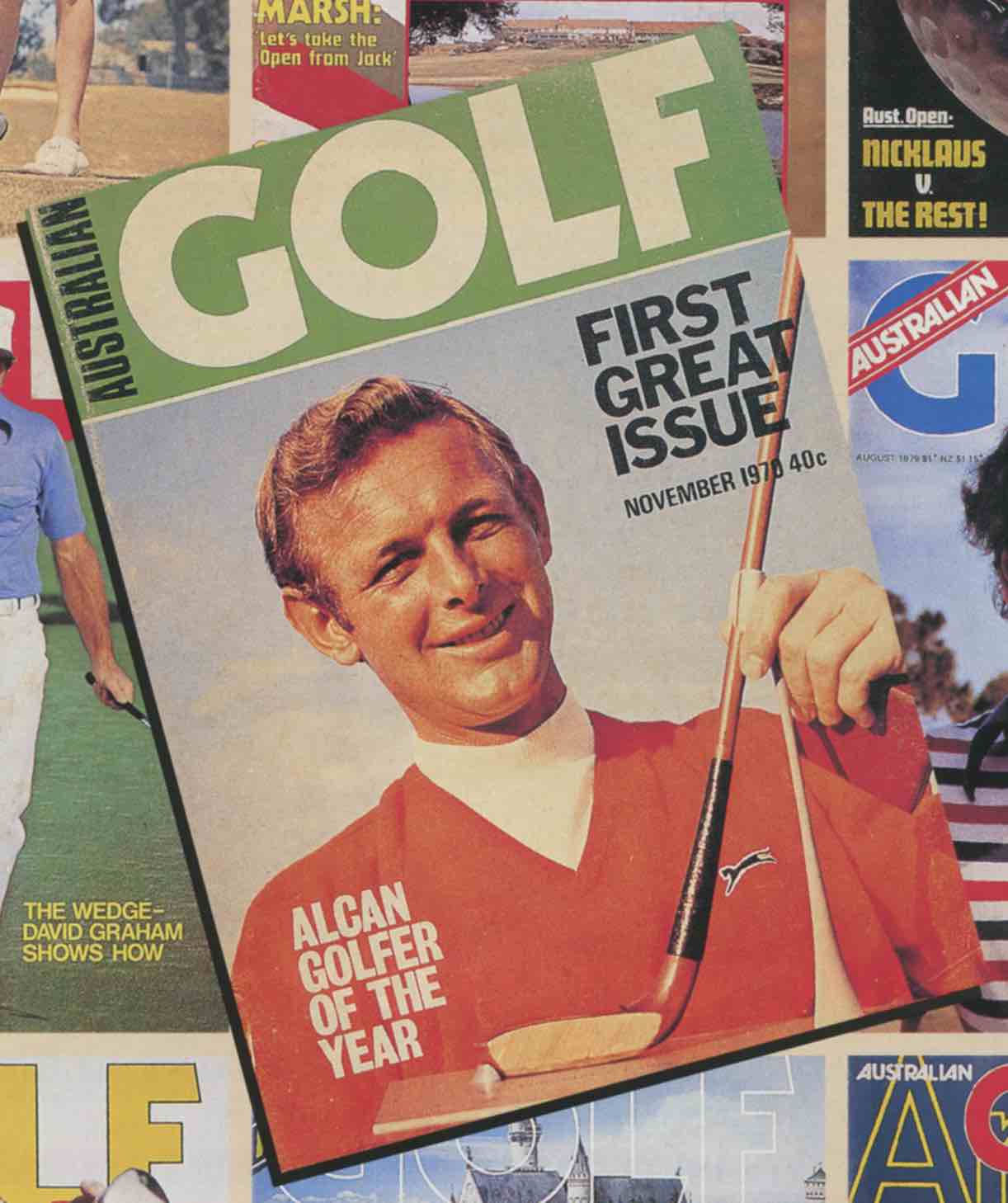Australian Golf Digest is one of the great survivors in the history of Australian sporting magazines. Few such publications get to acknowledge their half-century. The fate of two sister magazines that were founded by the same publisher in the same year demonstrate the scale of this achievement.
Australian Golf Digest’s origins date back to March 22, 1954, when two men, Jules Feldman and Colin Ryrie, officially established Modern Magazines Pty Ltd and began a new magazine called Modern Motor. Other publications followed, and then in the late ’60s two fifth form (Year 11) students, Eric Beecher and Paul Cockram, approached Modern Magazines with the concept for a monthly cricket magazine. “The editor-publisher of the last of Australia’s three earlier cricket magazines told them they were wasting their time,” reported The Bulletin. “Even Sir Donald Bradman was sceptical. But cricketer-journalist Richie Benaud was enthusiastic about their idea and encouraged them to pursue it.”
Benaud essentially opened his contact book for the two 17-year-olds, and the inaugural edition of Australian Cricket duly hit newsstands in November 1968. It was deemed a success, with sales of 20,000 copies. Beecher and Cockram were put on the Modern Magazines payroll full-time, but with their cricket magazine only coming out in the summer months they needed more to justify their positions. In 1970, three more sporting publications hit the market: Rugby League Week, Inside Football and Australian Golf. Through the 1970s, the ‘stable’ was also responsible for Modern Fishing, Modern Boating and Motorcycle News, as well as a number of business titles. A few of these can still be found today.
Sadly, Rugby League Week’s last issue came out in 2017, and Inside Football shut down a year later. Australian Golf (which became Australian Golf Digest in 1985) lives on.

An irony of Australian Golf’s original title is that it was not the first magazine to carry such a name. In 1908, a Melbourne publisher, Thomas Lothian, released a 24-page publication called Australian Golf and Motoring Magazine, which retailed for sixpence. “The hints from well-known professional players should be invaluable,” suggested one review of the foundation issue, but it only lasted a little longer than a year; not even a change of title to Australian Golf, Yachting and Motoring Magazine could rescue it. In 1922, a magazine called Golf: A Monthly Journal was launched and survived for a decade in its own right and then, after a merger, as Australian Golf and Tennis Magazine from 1932 to 1937.
More generally, the country was well served by a number of long-running sporting newspapers, such as Melbourne’s Sporting Globe and Sydney’s The Referee and the Sydney Sportsman (which became Sportsman). Since the Second World War, Australia has been home to a number of excellent general sporting magazines, from titles such as Sporting Life and Sports Novels in the late 1940s and ’50s to Inside Sport, which was first published in 1991 and still survives, but none could match those early sporting papers for longevity. Magazines focusing on a single major sport seemed to have more chance, and perhaps motoring, surfing and horse racing provide the best proof of this. Wheels, which began in 1953, and Motor, which emerged as Modern Motor a year later, are both still published in print form. Surfing World is approaching its 60th birthday, having made its first appearance in 1962, while Tracks, another surfing survivor (though not currently in print form because of the COVID-19 pandemic), was launched a month before Australian Golf. Racing’s Turf Monthly and Racetrack both ran for more 50 years before ceasing publication in the 21st century.
Some major sporting organisations’ newsletters or journals have evolved into long-running magazines, such as, for example, the Sporting Shooters Association of Australia’s official publication, Australian Shooter, which was first printed in 1948. Not quite of the same genre are the match-day programs: AFL Record, which began as the Football Record in 1912; and Big League, which was first published as Rugby League News in 1921 but was put on hold at the start of 2020.

The point of all this is to say that Australian Golf Digest, in reaching 50 years, is in rare and esteemed company. When The Referee published its final edition on August 31, 1939, the editor, JC Davis, who had been there since the beginning in 1886, wrote of his “deep regret” at having to close. “It would have been possible to cheapen the quality of the paper and to curtail its cover of the sporting field,” he said, “but it would not have been The Referee.”
Davis was a true giant of Australian sports journalism. Men and women of his ilk represent a common thread in all the country’s great and resilient sports magazines. The late Phil Tresidder, the long-time editor of Australian Golf and Australian Golf Digest, was cut from the same cloth. “For 53 years, The Referee has stood for all that is highest in sporting journalism,” Davis continued. “Its reputation and authority have been worldwide. Its name will remain forever, inseparably bound up with Australian sport.”
This is the tradition that magazines such as Australian Golf Digest have sought to preserve and build on. Eric Beecher told The Bulletin back in November 1968 that his and Paul Cockram’s ambition was to give “a national sport a national magazine it deserved”. What they did was start a process that has achieved much more than that.
• Geoff Armstrong has worked on more than 100 sports books as author, co-author, publisher, editor and researcher
